





Do you have a question about the Panasonic KX-TVA50 and is the answer not in the manual?
Introduces system administration roles, the KX-TVA Maintenance Console, and system administration definition.
Details system requirements and the installation process for the KX-TVA Maintenance Console software.
Provides step-by-step instructions on how to launch and initialize the KX-TVA Maintenance Console.
Covers creating, opening, saving, and closing system data files using the File menu.
Details various methods for connecting to the VPS: Profile, LAN, USB, and Modem.
Explains basic editing operations like Undo, Cut, Copy, Paste, Select All, and Delete.
Allows users to show or hide the Toolbar, Status Bar, Shortcut Bar, Utility Bar, and Menu Bar.
Provides quick access to various setting windows within the KX-TVA Maintenance Console.
Details various utilities for system management, backup, prompts, trace, and maintenance.
Covers creating and configuring subscriber mailboxes and their parameters.
Sets a default template applied to new mailboxes for easier creation.
Details individual mailbox parameters like number, extension, name, and password.
Configures how subscribers are notified of new messages, including lamps and devices.
Allows subscribers to send messages to multiple recipients immediately or at a specified time.
Moves or copies unplayed messages from one mailbox to another after a specified time.
Enables sending the same messages to multiple mailboxes in a single operation.
Allows assigning specific operations to keys for caller interaction.
Specifies destinations for remote call forwarding.
Allows subscribers to access their mailbox without entering a number.
Enables subscribers to receive new message notifications via email.
Defines the set of services available to subscribers based on their Class of Service (COS).
Specifies parameters for each Class of Service, such as name and greeting length.
Configures individual mailbox feature utilization based on COS.
Determines how incoming calls are handled based on ports and trunks.
Groups parameters to define how incoming calls are handled per port/trunk.
Configures various call routing and service parameters.
Routes callers based on Caller ID, DID, or PIN information.
Manages special holiday services that override standard call handling.
Configures specific parameters for services like Automated Attendant and Toll Saver.
Guides callers to perform specific functions using dial buttons.
A utility for visually creating and editing Custom Services.
Guides callers to connect with a designated party via specific button presses.
Assigns different operations based on date periods.
Assigns different operations based on time blocks during the day.
Assigns operations for each day of the week and holidays.
Requires callers to enter a password to access specific operations.
Manages system-wide settings including mailboxes, extensions, and caller names.
Allows sending messages to multiple mailboxes simultaneously.
Groups extensions that share a common mailbox for message notification.
Records and announces caller names for specified telephone numbers.
Contains detailed system parameter settings for various features.
Defines global parameters affecting integration with the PBX.
Allows generation of system reports for monitoring VPS operations.
Displays configuration parameters for mailboxes, including e-mail options.
Displays information about outgoing call activity, including call types and times.
Shows usage information for each port, including connection time and busy percentage.
Reports disk storage usage and message statistics for the HDD.
Displays information about recorded messages, call times, and feature usage for mailboxes.
Reports information about faxes received and transferred, including status.
Summarizes VPS activity over a period, detailing call handling results.
Displays information on Custom Service settings, access counts, and key usage.
Provides the status of all messages for specified subscribers.
Displays basic settings for specified mailboxes, including owner and password.
Shows mailbox access information, including last change, access counts, and failures.
Displays hourly statistics on incoming/outgoing calls and connected time.
Lists mailboxes, dates, and addresses for message waiting notification sent via email.
Manages system security settings for administrators and subscribers.
Covers password management and access controls for the system administrator.
Configures security settings related to subscriber password length and login failures.
Specifies default password types for new mailboxes.
Introduces system administration roles, the KX-TVA Maintenance Console, and system administration definition.
Details system requirements and the installation process for the KX-TVA Maintenance Console software.
Provides step-by-step instructions on how to launch and initialize the KX-TVA Maintenance Console.
Covers creating, opening, saving, and closing system data files using the File menu.
Details various methods for connecting to the VPS: Profile, LAN, USB, and Modem.
Explains basic editing operations like Undo, Cut, Copy, Paste, Select All, and Delete.
Allows users to show or hide the Toolbar, Status Bar, Shortcut Bar, Utility Bar, and Menu Bar.
Provides quick access to various setting windows within the KX-TVA Maintenance Console.
Details various utilities for system management, backup, prompts, trace, and maintenance.
Covers creating and configuring subscriber mailboxes and their parameters.
Sets a default template applied to new mailboxes for easier creation.
Details individual mailbox parameters like number, extension, name, and password.
Configures how subscribers are notified of new messages, including lamps and devices.
Allows subscribers to send messages to multiple recipients immediately or at a specified time.
Moves or copies unplayed messages from one mailbox to another after a specified time.
Enables sending the same messages to multiple mailboxes in a single operation.
Allows assigning specific operations to keys for caller interaction.
Specifies destinations for remote call forwarding.
Allows subscribers to access their mailbox without entering a number.
Enables subscribers to receive new message notifications via email.
Defines the set of services available to subscribers based on their Class of Service (COS).
Specifies parameters for each Class of Service, such as name and greeting length.
Configures individual mailbox feature utilization based on COS.
Determines how incoming calls are handled based on ports and trunks.
Groups parameters to define how incoming calls are handled per port/trunk.
Configures various call routing and service parameters.
Routes callers based on Caller ID, DID, or PIN information.
Manages special holiday services that override standard call handling.
Configures specific parameters for services like Automated Attendant and Toll Saver.
Guides callers to perform specific functions using dial buttons.
A utility for visually creating and editing Custom Services.
Guides callers to connect with a designated party via specific button presses.
Assigns different operations based on date periods.
Assigns different operations based on time blocks during the day.
Assigns operations for each day of the week and holidays.
Requires callers to enter a password to access specific operations.
Manages system-wide settings including mailboxes, extensions, and caller names.
Allows sending messages to multiple mailboxes simultaneously.
Groups extensions that share a common mailbox for message notification.
Records and announces caller names for specified telephone numbers.
Contains detailed system parameter settings for various features.
Defines global parameters affecting integration with the PBX.
Allows generation of system reports for monitoring VPS operations.
Displays configuration parameters for mailboxes, including e-mail options.
Displays information about outgoing call activity, including call types and times.
Shows usage information for each port, including connection time and busy percentage.
Reports disk storage usage and message statistics for the HDD.
Displays information about recorded messages, call times, and feature usage for mailboxes.
Reports information about faxes received and transferred, including status.
Summarizes VPS activity over a period, detailing call handling results.
Displays information on Custom Service settings, access counts, and key usage.
Provides the status of all messages for specified subscribers.
Displays basic settings for specified mailboxes, including owner and password.
Shows mailbox access information, including last change, access counts, and failures.
Displays hourly statistics on incoming/outgoing calls and connected time.
Lists mailboxes, dates, and addresses for message waiting notification sent via email.
Manages system security settings for administrators and subscribers.
Covers password management and access controls for the system administrator.
Configures security settings related to subscriber password length and login failures.
Specifies default password types for new mailboxes.
| Brand | Panasonic |
|---|---|
| Model | KX-TVA50 |
| Category | Telephone Accessories |
| Language | English |

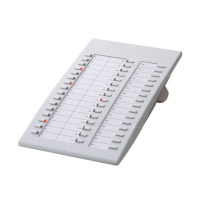



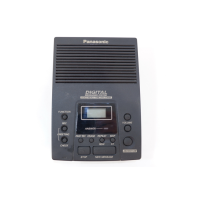
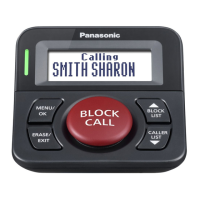
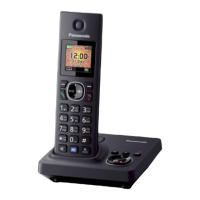

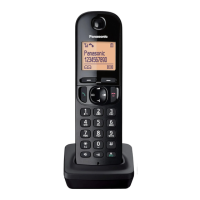

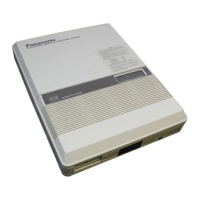
